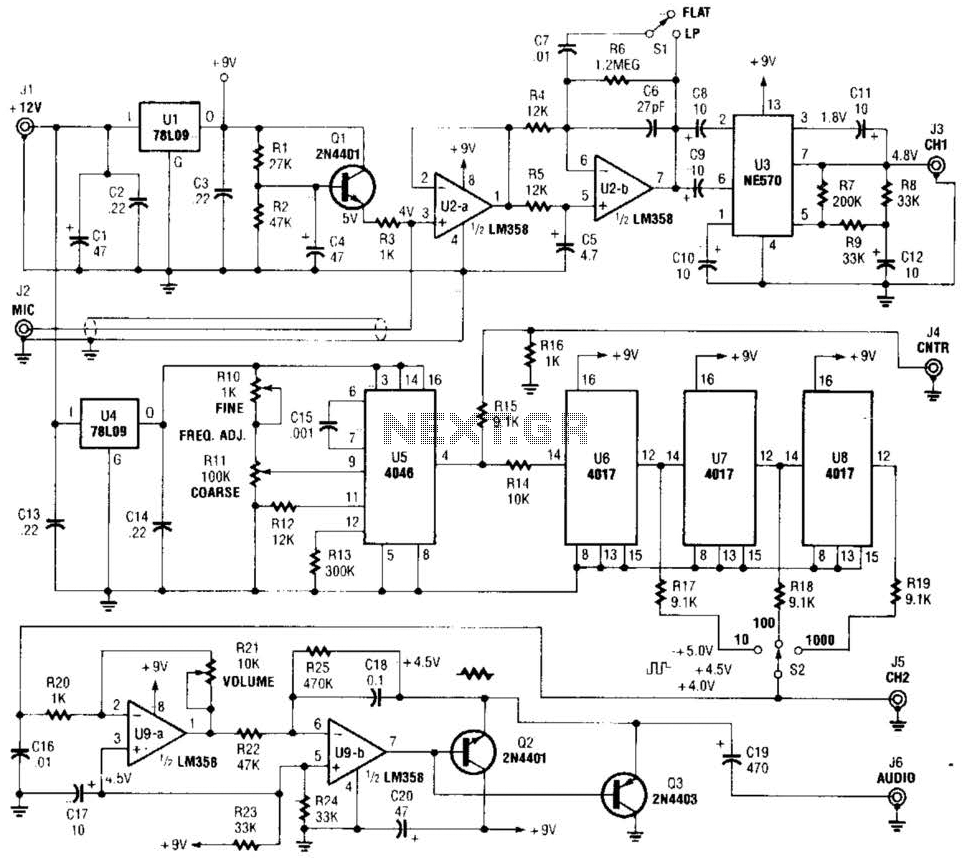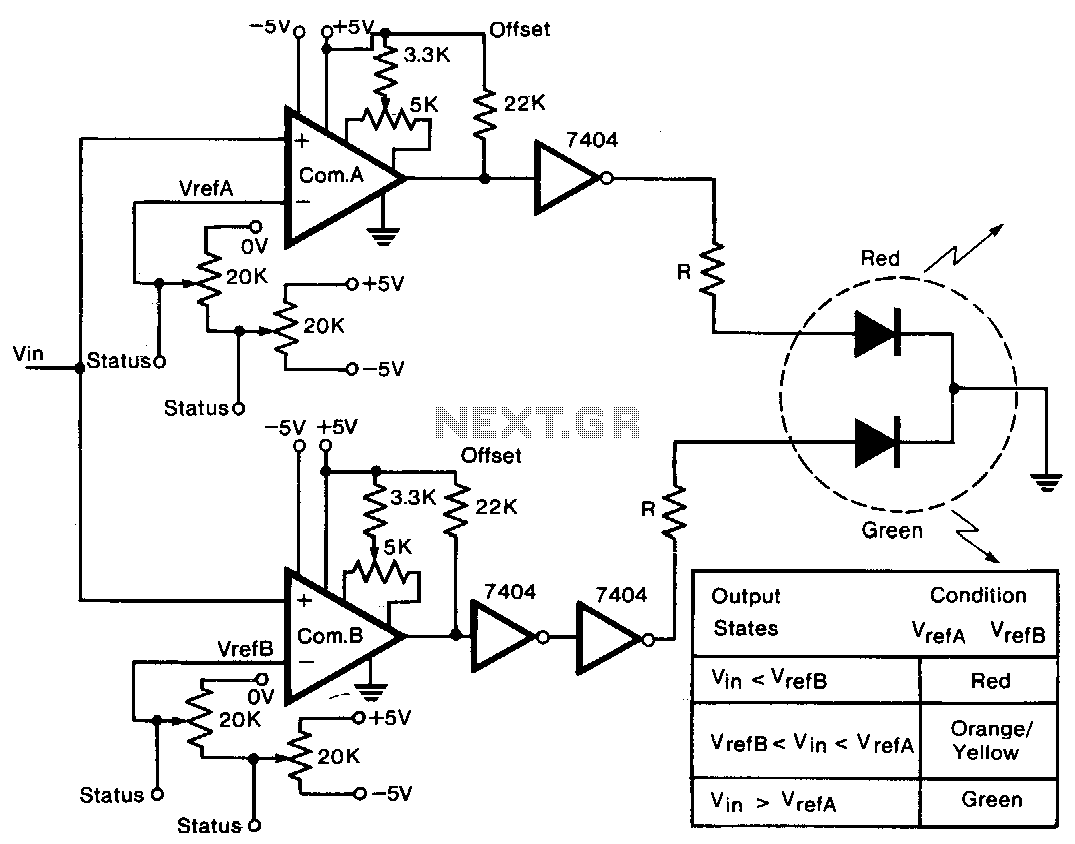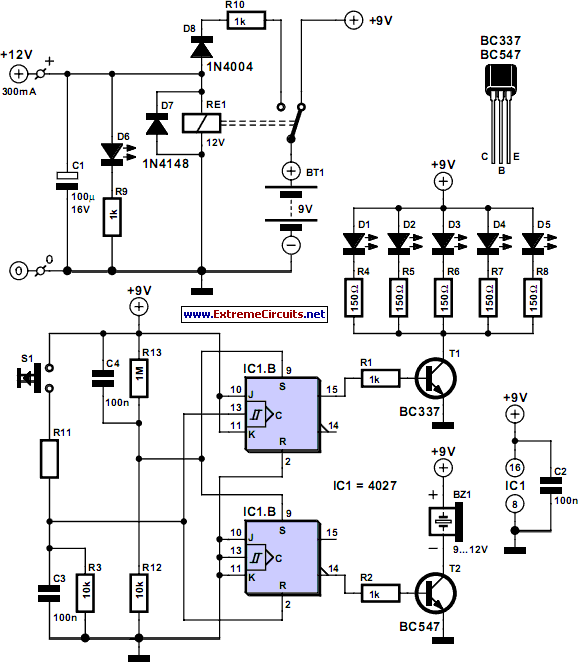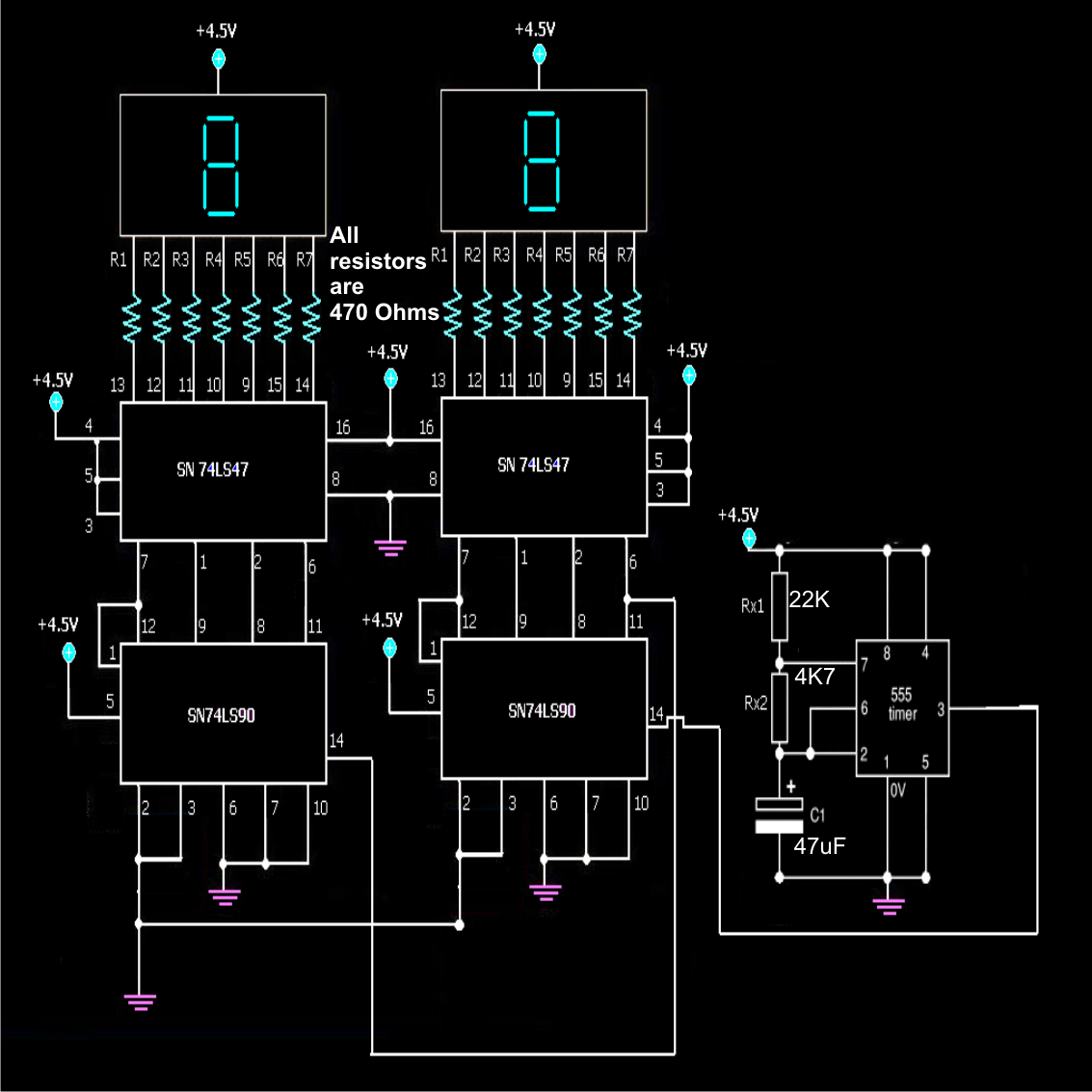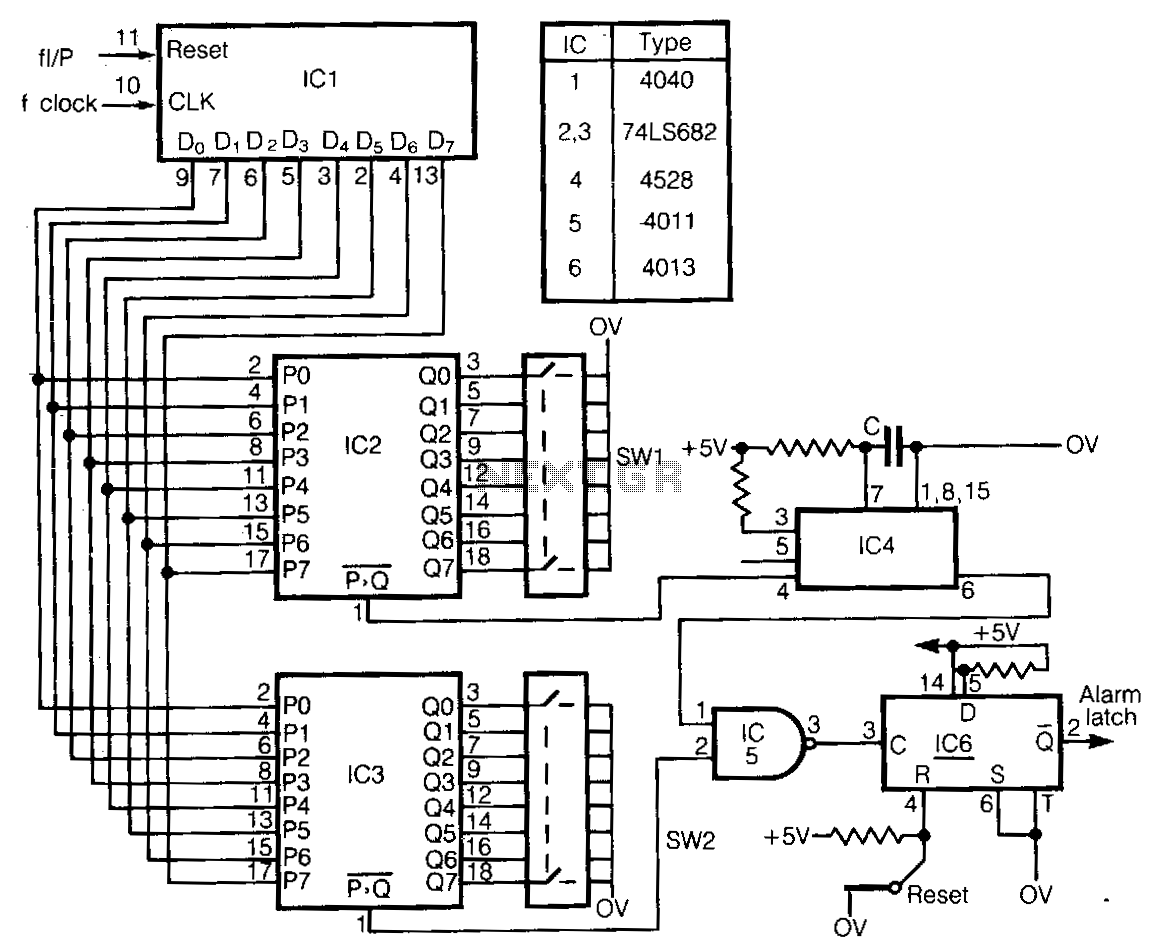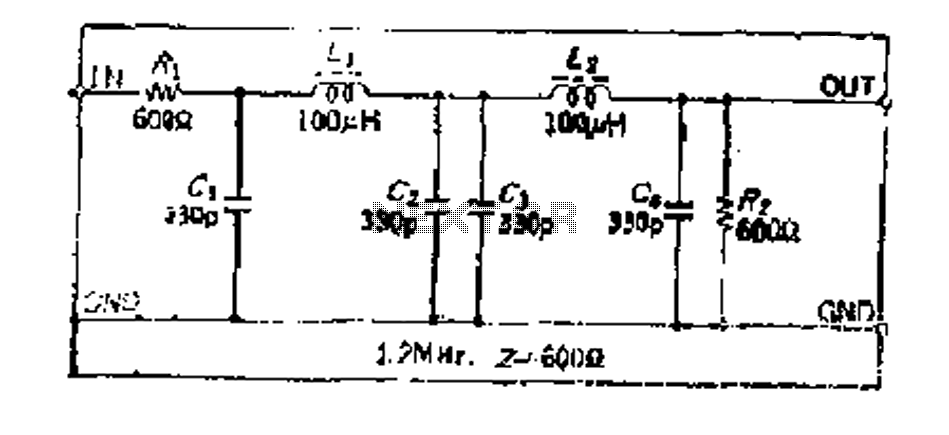
Voltage To Frequency Converter
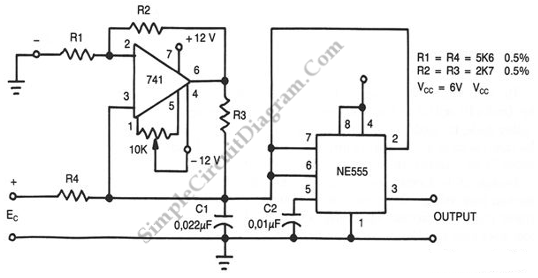
This circuit accepts positive, negative, or differential control voltages. When the control voltage is zero, the output frequency is also zero.
The described circuit functions as a versatile control voltage interface, capable of processing a range of input signals, including positive and negative voltages, as well as differential signals. This capability allows for flexible integration into various electronic systems requiring frequency modulation based on control voltage inputs.
The core operation of the circuit is contingent upon the input control voltage level. At a control voltage of zero volts, the output frequency is maintained at zero, effectively ceasing any oscillation or signal generation. This feature can be particularly useful in applications where a specific state must be achieved or maintained in the absence of a control signal.
The circuit is likely to include components such as operational amplifiers, resistors, capacitors, and possibly a voltage-controlled oscillator (VCO) or similar frequency-generating devices. The design may utilize feedback mechanisms to stabilize the output frequency in response to varying input control voltages, ensuring that the output remains proportional to the input signal.
In practical applications, this circuit could be employed in synthesizers, modulation systems, or any electronic device requiring precise control over frequency outputs based on varying voltage levels. The differential input capability enhances the circuit's adaptability, allowing it to function effectively in systems where noise rejection and signal integrity are critical.
Overall, the circuit represents an efficient solution for managing frequency outputs in response to a wide range of control signals, making it a valuable component in modern electronic design.Using this circuit, we can accept positive or negative or differential control voltages. When the control voltage is zero, the output frequency is zero. To.. 🔗 External reference
The described circuit functions as a versatile control voltage interface, capable of processing a range of input signals, including positive and negative voltages, as well as differential signals. This capability allows for flexible integration into various electronic systems requiring frequency modulation based on control voltage inputs.
The core operation of the circuit is contingent upon the input control voltage level. At a control voltage of zero volts, the output frequency is maintained at zero, effectively ceasing any oscillation or signal generation. This feature can be particularly useful in applications where a specific state must be achieved or maintained in the absence of a control signal.
The circuit is likely to include components such as operational amplifiers, resistors, capacitors, and possibly a voltage-controlled oscillator (VCO) or similar frequency-generating devices. The design may utilize feedback mechanisms to stabilize the output frequency in response to varying input control voltages, ensuring that the output remains proportional to the input signal.
In practical applications, this circuit could be employed in synthesizers, modulation systems, or any electronic device requiring precise control over frequency outputs based on varying voltage levels. The differential input capability enhances the circuit's adaptability, allowing it to function effectively in systems where noise rejection and signal integrity are critical.
Overall, the circuit represents an efficient solution for managing frequency outputs in response to a wide range of control signals, making it a valuable component in modern electronic design.Using this circuit, we can accept positive or negative or differential control voltages. When the control voltage is zero, the output frequency is zero. To.. 🔗 External reference
